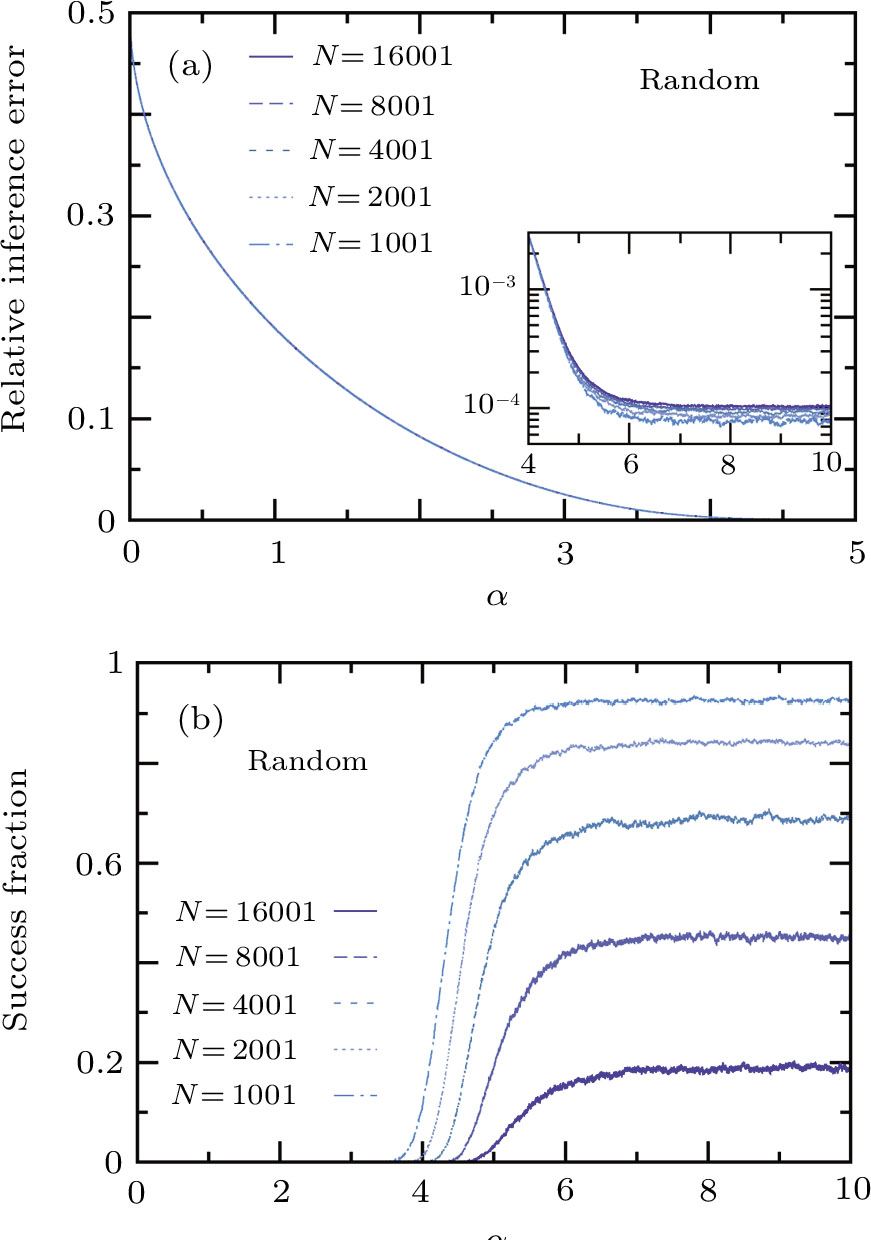Active Online Learning in the Binary Perceptron Problem
Supported by the National Natural Science Foundation of China under Grant Nos. 11421063 and 11747601 and the Chinese Academy of Sciences under Grant No. QYZDJ-SSW-SYS018
The performance of passive online learning. The P training patterns are fed to the student sequentially and they are independent random N-dimensional Ising vectors. The pattern density is α = P/N. The total number of simulated independent online learning trajectories is 
